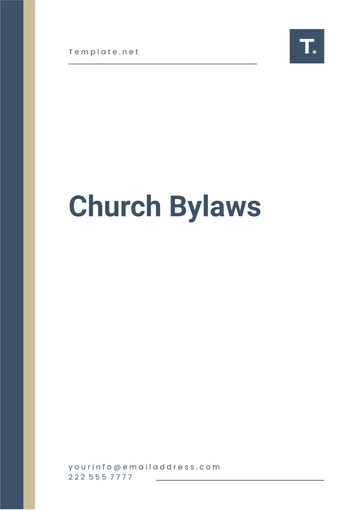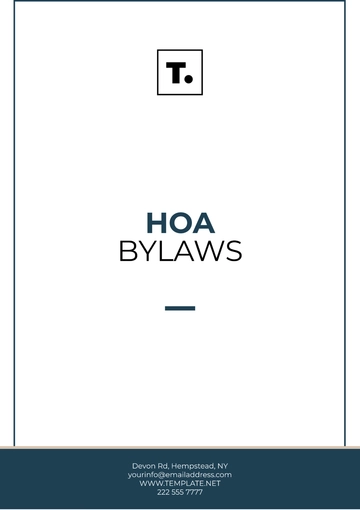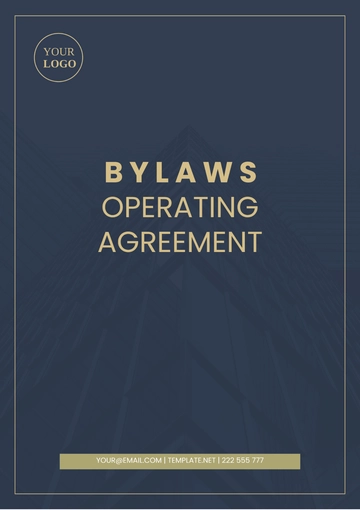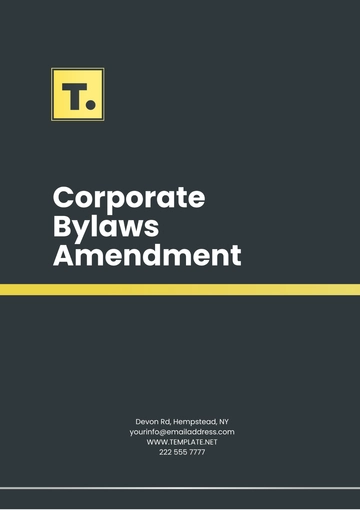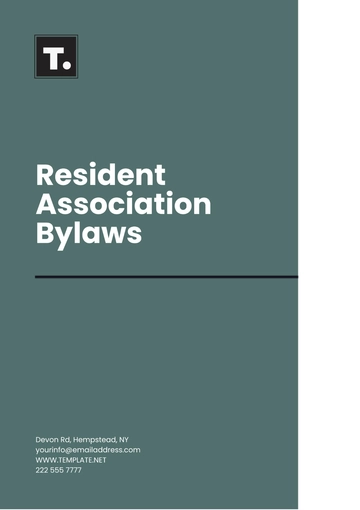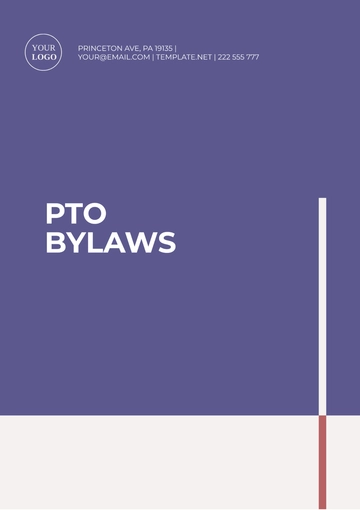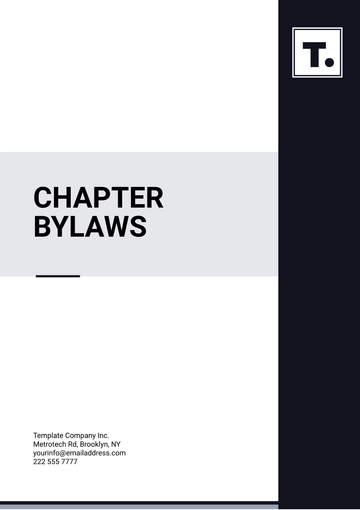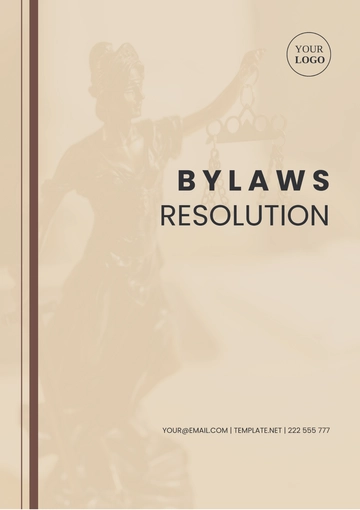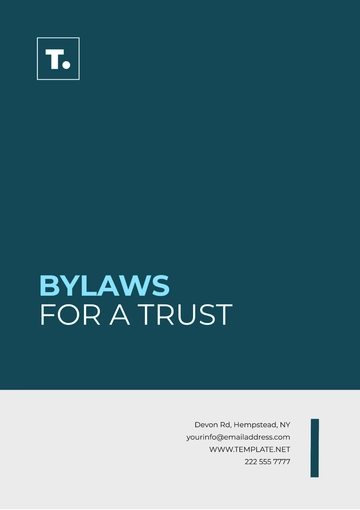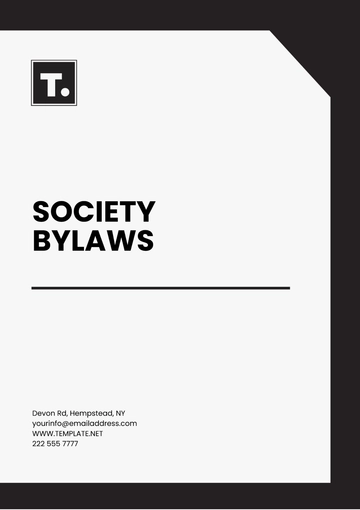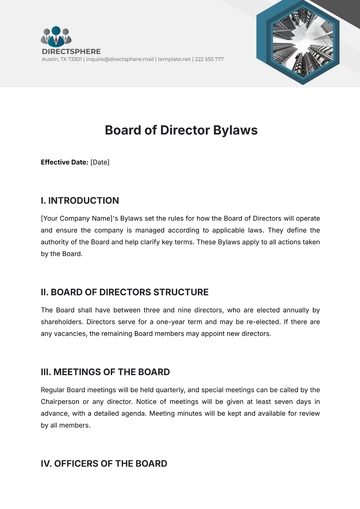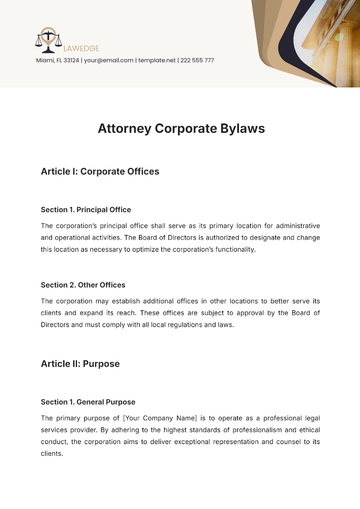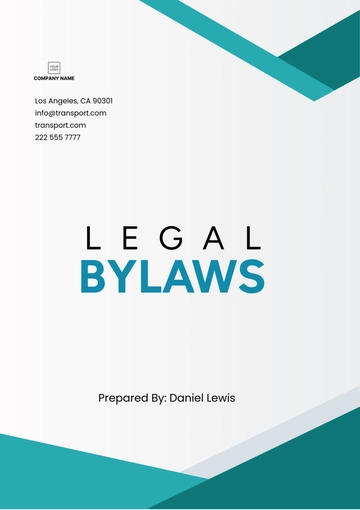Free Committee Bylaws

Article I: Name and Purpose
1.1 Name:
The name of this committee shall be the "Employee Wellness and Engagement Committee", hereinafter referred to as "the Committee".
1.2 Purpose:
The purpose of the Committee is to promote employee well-being, foster a positive work environment, and enhance employee engagement within [YOUR COMPANY NAME]. This includes but is not limited to organizing wellness programs, social events, and recognition initiatives to support the physical, mental, and emotional health of employees. Additionally, the Committee will serve as a platform for employees to voice their concerns, ideas, and suggestions for improving workplace satisfaction and productivity. Overall, the Committee aims to contribute to a culture of inclusivity, collaboration, and mutual support among all members of the organization.
Article II: Membership
2.1 Composition:
The Committee shall consist of 7 members, including a Chairperson and a Secretary.
2.2 Qualifications:
Membership in the Committee shall be open to all senior-level employees of the organization with at least 2 years of service.
2.3 Appointment:
Members of the Committee shall be appointed by the CEO for a term of 3 years, renewable for one additional term.
Article III: Roles and Responsibilities
3.1 Chairperson:
The Chairperson shall preside over all meetings of the Committee, set the agenda, and ensure that all Committee activities are conducted by these Bylaws.
3.2 Secretary:
The Secretary shall keep accurate records of all Committee proceedings, maintain a record of membership, and handle correspondence on behalf of the Committee.
3.3 Members:
All members of the Committee shall actively participate in Committee activities, attend meetings regularly, and contribute to the achievement of the Committee's objectives.
Article IV: Meetings
4.1 Frequency:
The Committee shall meet quarterly or as deemed necessary by the Chairperson.
4.2 Notice:
Notice of meetings shall be provided to all members at least 10 days in advance, specifying the date, time, and agenda items.
4.3 Quorum:
A quorum for the transaction of business shall consist of at least 4 members of the Committee.
4.4 Agenda:
The Chairperson shall prepare and distribute the agenda for each meeting, incorporating input from Committee members. For example, agenda items may include reviewing financial reports, discussing strategic initiatives, and addressing any outstanding issues.
Article V: Decision-Making
5.1 Voting:
Decisions of the Committee shall be made by a simple majority vote of members present at a meeting, except where otherwise specified in these Bylaws.
5.2 Proxy Voting:
Proxy voting shall not be permitted, and members must be present to cast their votes.
5.3 Tie Votes:
In the event of a tie vote, the Chairperson shall have the casting vote.
Article VI: Amendments
6.1 Proposal:
Any member of the Committee may propose amendments to these Bylaws by submitting a written proposal to the Chairperson. For instance, if a member believes that the quorum requirement should be adjusted, they may submit a proposal to that effect.
6.2 Approval:
Proposed amendments shall be considered at the next regularly scheduled meeting of the Committee and shall require approval by a two-thirds majority of members present. For example, if there are 7 members present at the meeting, at least 5 members must vote in favor of the amendment for it to be approved.
6.3 Effective Date:
Approved amendments shall take effect immediately upon adoption unless otherwise specified. For example, if an amendment pertains to the frequency of meetings, it may specify a start date for the new meeting schedule.
Article VII: Dissolution and Ratification
7.1 Procedure:
In the event of the dissolution of the Committee, any remaining assets shall be distributed by the organization's policies and procedures.
7.2 Notification:
Members of the Committee shall be notified in writing of any decision to dissolve the Committee and the rationale behind such a decision.
7.3 Ratification:
These Bylaws shall be ratified by [STATE RATIFYING BODY, e.g., the Board of Directors] and shall take effect upon approval.
7.4 Review:
These Bylaws shall be reviewed annually by the Committee for any necessary updates or amendments.
Article VIII: Adoption and Interpretation
8.1 Adoption:
These Bylaws shall be adopted by a vote of two-thirds majority of members present at a meeting called for that purpose. For example, if there are 10 members present at the meeting, at least 7 members must vote in favor of adopting the Bylaws.
8.2 Interpretation:
In the event of any ambiguity or dispute regarding the interpretation of these Bylaws, the decision shall be made by the Chairperson, subject to appeal to the Board of Directors. For example, if there is disagreement among Committee members regarding the application of a specific provision, the Chairperson will make a ruling, which may be appealed to the Board of Directors for further consideration and resolution.
Article IX: Miscellaneous
9.1 Conflict of Interest:
Committee members shall disclose any potential conflicts of interest and refrain from participating in discussions or decisions where such conflicts exist.
9.2 Indemnification:
Committee members shall be indemnified by the organization to the fullest extent permitted by law for actions taken in good faith in the performance of their duties.
- 100% Customizable, free editor
- Access 1 Million+ Templates, photo’s & graphics
- Download or share as a template
- Click and replace photos, graphics, text, backgrounds
- Resize, crop, AI write & more
- Access advanced editor
Discover the ultimate solution for crafting impeccable committee bylaws effortlessly with Template.net's Committee Bylaws Template. This meticulously designed template offers unparalleled convenience with its editable and customizable features. Seamlessly tailor your bylaws to perfection with ease, whether you prefer customization or utilizing our AI Editor. Simplify your administrative tasks and ensure precision with this indispensable tool.




